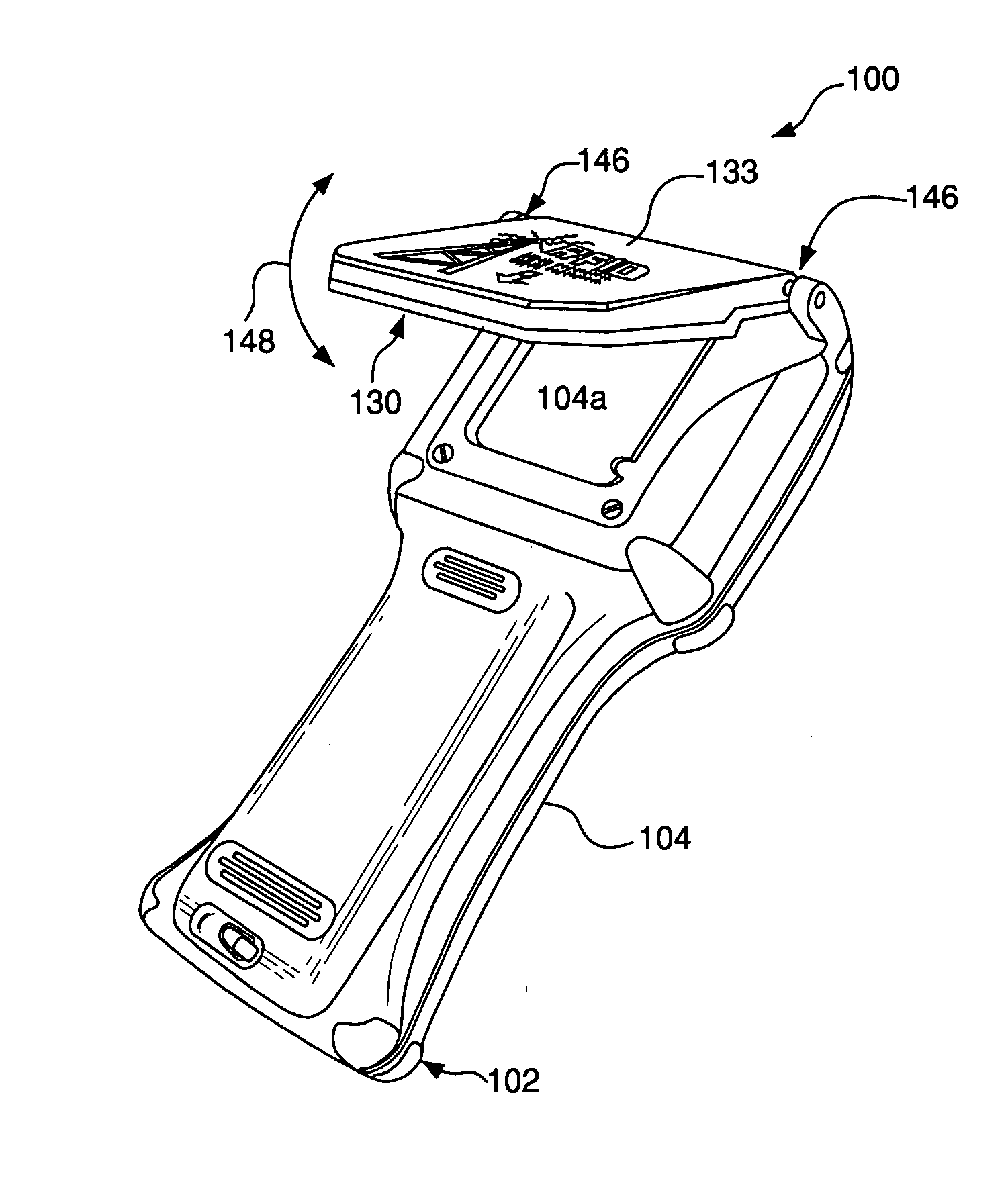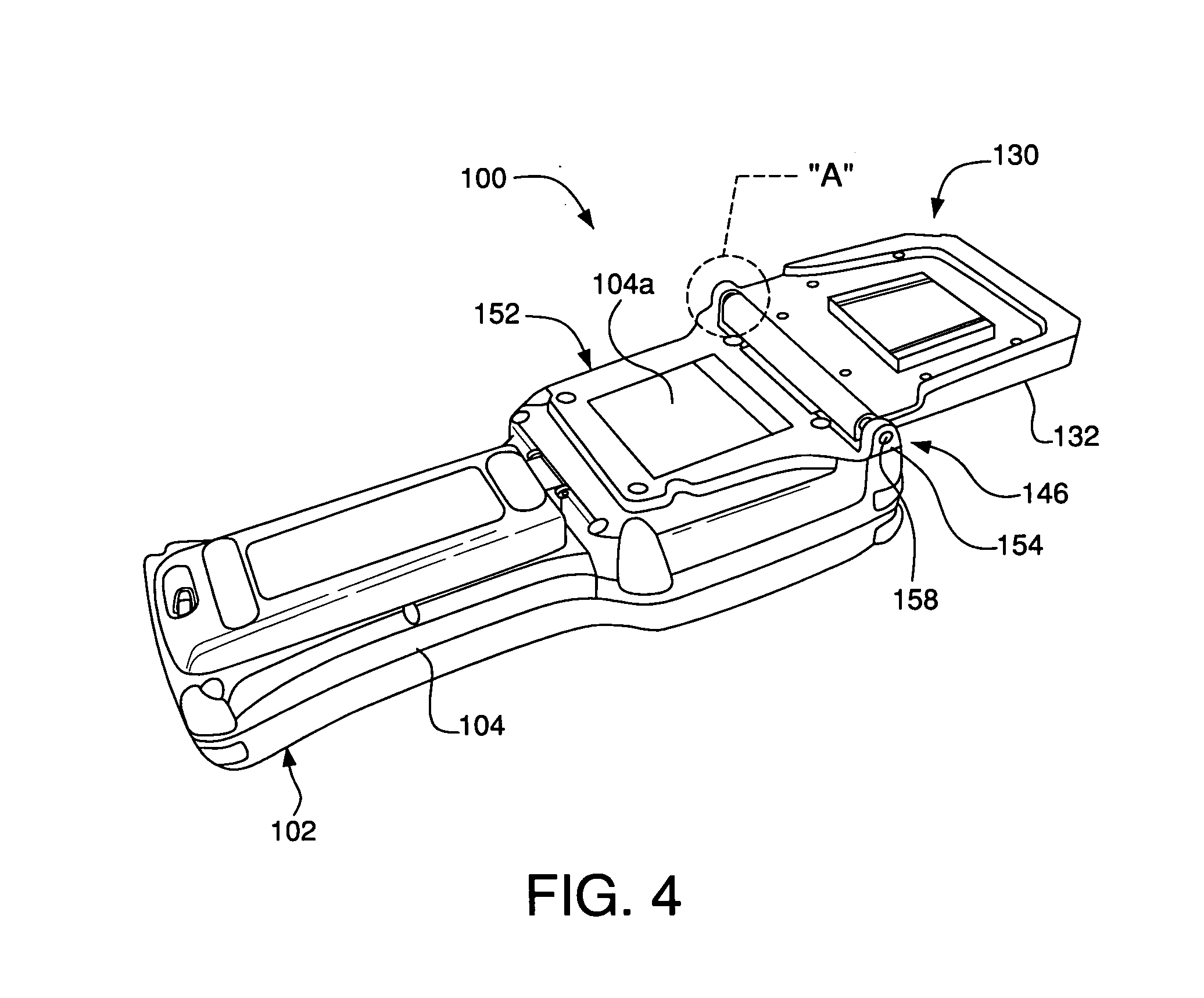Radio frequency identification device with movable antenna
- Summary
- Abstract
- Description
- Claims
- Application Information
AI Technical Summary
Benefits of technology
Problems solved by technology
Method used
Image
Examples
Embodiment Construction
[0036] FIGS. 1 to 8, 11A, and 11B depict a preferred embodiment of an RFID reader 100. The reader 100 comprises a body 102. The body 102 includes a casing 104. The casing 104 preferably has the relatively thin, elongated portion that can act as a handle by which the user can grasp and hold the reader 100.
[0037] The body 102 includes a controller 108, a display 110, and a keypad 112 housed within the casing 102 (see FIGS. 1 and 6). The controller 108 comprises a processor such as a microprocessor 114 (see FIG. 6). The controller 108 also includes a memory-storage device 116 communicatively coupled to the microprocessor 114, and a set of computer-executable instructions 118 stored on the memory-storage device 116.
[0038] The display 110 and the keypad 112 are communicatively coupled to the processor 108. The keypad 112 preferably is located on the relatively thin (handle) portion of the casing 104, and facilitates entry of commands, data, and other inputs by the user. The display 110...
PUM
 Login to View More
Login to View More Abstract
Description
Claims
Application Information
 Login to View More
Login to View More - R&D
- Intellectual Property
- Life Sciences
- Materials
- Tech Scout
- Unparalleled Data Quality
- Higher Quality Content
- 60% Fewer Hallucinations
Browse by: Latest US Patents, China's latest patents, Technical Efficacy Thesaurus, Application Domain, Technology Topic, Popular Technical Reports.
© 2025 PatSnap. All rights reserved.Legal|Privacy policy|Modern Slavery Act Transparency Statement|Sitemap|About US| Contact US: help@patsnap.com



